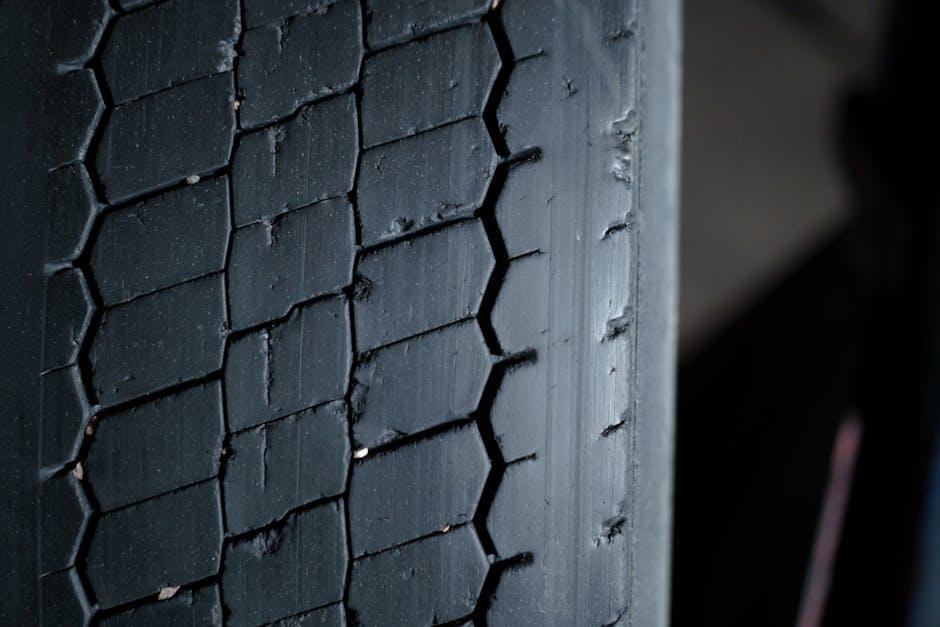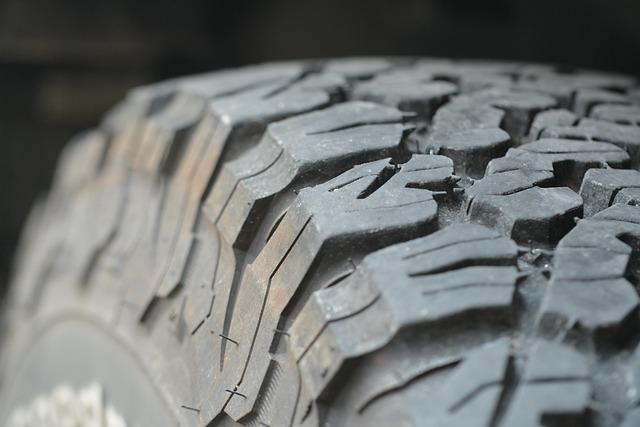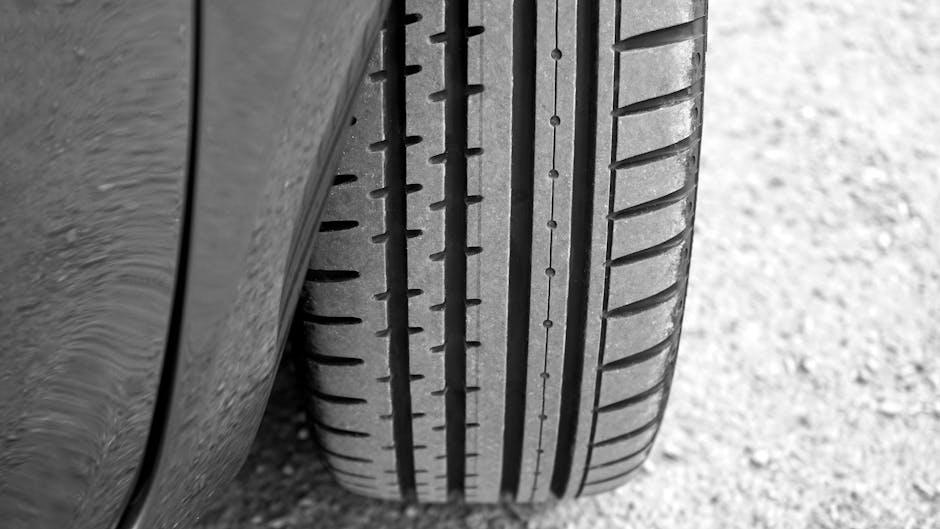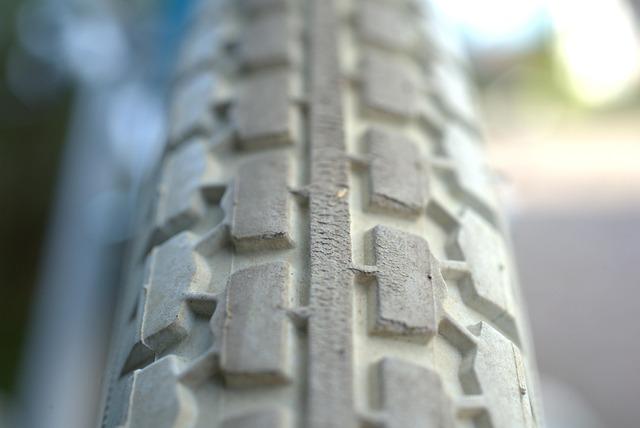Beneath the sleek surface of every tire lies a hidden hero—the tread. Often overlooked and underestimated, tire tread depth plays a crucial role in your vehicle’s performance, safety, and longevity. It’s more than just a measurement; it’s the grip that connects you to the road, the silent guardian against slippery surfaces, and the key factor in preventing accidents. Understanding why tire tread depth matters can transform the way you approach driving and vehicle maintenance, turning a simple check into a vital habit that protects lives. Let’s delve beneath the rubber to explore the significance of tread depth and how it keeps you moving safely forward.
Table of Contents
- Understanding Tire Tread Depth and Its Impact on Safety
- How Tread Depth Affects Traction in Different Weather Conditions
- Signs Your Tire Tread Depth is Too Low and Needs Replacement
- Simple Methods to Measure Your Tire Tread Depth at Home
- Choosing the Right Tread Depth for Your Driving Habits
- Expert Tips for Maintaining Optimal Tread Depth Year-Round
- Q&A
- In Conclusion

Understanding Tire Tread Depth and Its Impact on Safety
Proper tire tread depth is a vital factor that directly correlates with your vehicle’s grip on the road, especially in varying weather conditions. Tires with adequate tread channels efficiently displace water, reducing the risk of hydroplaning during wet conditions. As the tread wears down, the tire’s ability to maintain traction diminishes, making braking less effective and increasing stopping distances. This loss of performance is not just a minor inconvenience; it’s a genuine safety hazard that can lead to accidents, particularly on slippery or uneven surfaces.
Understanding the safe limits of tread depth can save lives. While new tires typically start with a tread depth of about 10/32 to 11/32 inch, many safety experts recommend replacing them when they reach 2/32 inch, the legal minimum in many regions. Regularly checking and maintaining your tread will ensure optimal performance. Here’s a quick reference table showing different tread depths and the associated safety impact:
| Tread Depth (inches) | Safety Level | Recommended Action |
|---|---|---|
| 10/32 – 11/32 | Optimal grip and performance | Monitor regularly |
| 4/32 – 6/32 | Moderate traction, caution advised | Plan replacement soon |
| 2/32 (legal limit) | Reduced braking and risk of hydroplaning | Replace immediately |
| < 2/32 | Unsafe for driving | Do not drive, replace now |
- Regular checks: Use a tread depth gauge or the penny test for easy monitoring.
- Weather considerations: Deeper treads are crucial for winter and rainy conditions.
- Balanced wear: Rotate tires regularly to maintain even tread depth.

How Tread Depth Affects Traction in Different Weather Conditions
Maintaining adequate tread depth is crucial to ensuring your tires grip the road effectively under varying weather conditions. In dry weather, deeper treads provide a larger surface area that enhances traction by allowing the rubber to conform better to the road texture. However, as tread depth diminishes, this contact becomes less effective, leading to decreased stability and increased stopping distances. Conversely, in wet conditions, the role of tread depth becomes even more critical as the grooves channel water away from the tire’s surface, reducing hydroplaning risks. A shallow tread struggles to displace water, causing the vehicle to lose contact with the road and greatly reducing control.
In snowy or icy weather, tread depth functions differently but remains essential for safety. Deeper treads create biting edges that grip snow and ice, improving acceleration, braking, and cornering. Conversely, worn tires with insufficient tread depth fail to engage the snow, leading to slippage and a loss of handling precision. Here’s a quick overview of how tread depth influences traction across various conditions:
- Dry: Maximizes rubber-to-road contact; shallow tread reduces grip.
- Wet: Channels water to prevent hydroplaning; shallow tread increases sliding risk.
- Snow/Ice: Provides biting edges for grip; worn tires slide easily.
| Weather Condition | Ideal Tread Depth | Effect on Traction |
|---|---|---|
| Dry | 6/32″ or more | Strong grip, shorter stopping distance |
| Wet | 7/32″ or more | Prevents hydroplaning, maintains control |
| Snow/Ice | 8/32″ or more | Improves traction, safer handling |

Signs Your Tire Tread Depth is Too Low and Needs Replacement
When your tires start losing their grip, it’s often a silent warning that the tread depth is dangerously low. One of the first signals is a noticeable decrease in traction, especially on wet or slick roads. You might experience longer braking distances or feel your vehicle slipping during cornering. Another key sign is the appearance of tread wear indicators—small rubber bars running perpendicular to the tread. Once these bars become flush with the tire surface, it’s time to get new tires without delay.
Other visible clues include uneven tread wear patterns or bald spots, which could indicate alignment or suspension issues but also confirm the need for replacement. Additionally, if you spot cracks, cuts, or bulges along the tire’s sidewall, this is a severe safety hazard. Many drivers use the penny test—insert a penny into the tire grooves with Lincoln’s head upside down; if you see the top of his head, your tread depth is under 2/32 inch, which is considered legally unsafe in many regions.
- Decreased handling and responsiveness
- Visible tread wear indicators at tread level
- Uneven tread wear or bald patches
- Cracks or bulges on the tire sidewalls
- Failing the penny test (less than 2/32 inch tread depth)
| Visual Cue | What It Means | Recommended Action |
|---|---|---|
| Tread Wear Indicator Flush | Tread depth below safety limit | Replace immediately |
| Uneven Wear | Possible alignment or suspension issue | Inspect & repair, then replace tire |
| Sidewall Cracks/Bulges | Structural damage | Do not drive, immediate replacement |
| Failed Penny Test | Tread below 2/32 inch | Time for new tires |

Simple Methods to Measure Your Tire Tread Depth at Home
Checking your tire tread depth doesn’t have to be complicated or costly. With a few simple household items, you can quickly assess whether your tires still provide adequate grip for safe driving. One popular method involves using a penny: insert the coin with Lincoln’s head upside down into the tread grooves. If you can see the top of his head, it’s a clear signal that your tread depth is below the recommended limit of 2/32 of an inch, and it’s time for a replacement. Another handy tool is a tread depth gauge, which offers a precise measurement and is available at most auto parts stores for a low price.
For those looking for a quick visual check, many tires come equipped with built-in tread wear indicators—small raised bars that run perpendicular to the tread direction. When these bars become flush with the tread, it means your tire has reached its minimum safe depth. Here’s a simple guide to visualize what different tread depths mean for your tire’s performance:
| Tread Depth (inches) | Condition | Effect on Safety |
|---|---|---|
| 6/32 or more | Excellent | Optimal grip & water evacuation |
| 4/32 to 5/32 | Fair | Safe, but wet weather performance declining |
| 2/32 or less | Poor | Risk of hydroplaning & reduced traction |
- Penny test: Easy and quick, requires only a penny.
- Tread depth gauge: Offers accuracy and repeatability.
- Wear indicator bars: Built into tires for constant reference.

Choosing the Right Tread Depth for Your Driving Habits
When selecting the ideal tread depth, it’s essential to consider how you use your vehicle daily. Drivers who frequently navigate through rain-soaked streets or snowy conditions benefit from deeper treads, as these grooves enhance water evacuation and improve grip, reducing the risk of hydroplaning. Conversely, if your driving is mostly on dry, smooth highways, a moderately worn tread might still offer adequate traction, potentially extending the tire’s lifespan without compromising safety. Understanding your unique driving environment helps tailor the tread depth to match performance needs and weather challenges.
Here’s a quick guide to help align your tread depth choice with your driving style:
- City Commuters: Aim for at least 6/32” tread for better wet traction and urban maneuvering.
- Off-Road Enthusiasts: Deeper than 8/32” to conquer rough terrains and mud.
- Highway Drivers: A minimum of 4/32” might suffice for smooth, dry roads but stay mindful of weather changes.
- All-Weather Drivers: Prioritize 7/32” or more to tackle variable conditions with confidence.
| Tread Depth (32nds of an Inch) | Recommended for | Key Benefit |
|---|---|---|
| 4 or less | Dry Highway Driving | Extended tire life on smooth pavement |
| 5-6 | Urban & Rainy Conditions | Improved water dispersion and traction |
| 7-8+ | All-Weather & Off-Road | Superior grip and safe performance |

Expert Tips for Maintaining Optimal Tread Depth Year-Round
To keep your tires performing at their best, frequent tread depth checks are essential—ideally once a month or before long trips. Use a tread depth gauge or the classic penny test, placing a coin with Lincoln’s head down into the groove; if you can see the top of his head, it’s time for a replacement. Don’t forget to inspect all tires, including the spare, to avoid unexpected roadside surprises. Additionally, maintain proper tire pressure, as underinflated or overinflated tires can cause uneven wear, cutting down your tread life dramatically.
Rotate your tires regularly, typically every 6,000 to 8,000 miles, to ensure even wear patterns. Balancing and wheel alignment are equally important; misalignment can cause rapid tread deterioration on one side. Consider the table below for a quick maintenance checklist that can help you stay proactive:
| Maintenance Action | Frequency | Benefits |
|---|---|---|
| Tread Depth Check | Monthly | Detects wear early |
| Tire Rotation | Every 6,000-8,000 miles | Promotes even wear |
| Wheel Alignment | Annually or as needed | Prevents uneven tread damage |
| Tire Pressure Check | Monthly & before trips | Optimizes tread performance |
Q&A
Q&A: Tire Tread Depth — Why It Matters
Q1: What is tire tread depth, and why should I care about it?
A1: Tire tread depth refers to the measurement of the grooves carved into your tire’s rubber surface. Think of it as the tire’s fingerprint on the road. It matters because these grooves channel water away, improve traction, and keep your vehicle gripping firmly—especially in wet or slippery conditions. Shallow treads mean less grip, increasing the risk of skidding or hydroplaning.
Q2: How do I know if my tire tread depth is too low?
A2: The industry standard warning is when tread depth falls below 2/32 of an inch (about 1.6 millimeters). You can check this with a tread depth gauge or the simple penny test: Insert a penny with Lincoln’s head upside down into the tread. If you can see the top of his head, it’s time for new tires.
Q3: What happens if I continue driving with worn-out tread?
A3: Driving on worn tires is like walking on ice with socks—unstable and unsafe. Reduced tread depth compromises braking performance, increases stopping distances, and heightens the chance of hydroplaning on wet roads, putting you and others at risk. Plus, many regions legally require minimum tread depths for safe driving.
Q4: Are all tires affected equally by tread wear?
A4: Not quite! Performance tires, winter tires, or those made from softer rubber compounds might wear differently based on driving habits, road surfaces, and climate. Regular rotations and proper inflation help ensure even wear and extend the life of your treads.
Q5: How often should I check my tire tread depth?
A5: Make it a habit to check your tires at least once a month and before long trips. Seasonal changes and unexpected road conditions can accelerate wear, so keeping an eye on tread depth helps you stay proactive rather than reactive.
Q6: Can I drive safely if only one tire has low tread depth?
A6: It’s best to replace tires in pairs or sets to maintain balanced handling and braking. A lone worn tire can cause uneven grip and unpredictable vehicle behavior, undermining your safety.
Q7: Are tires with deeper treads always better?
A7: While deeper treads enhance wet-weather performance, extremely deep or aggressive tread patterns may increase road noise or reduce fuel efficiency. The key is selecting tires suited for your driving conditions and maintaining proper tread depth.
Q8: What else affects tire safety besides tread depth?
A8: Tread depth is vital, but also watch for sidewall damage, cracks, bulges, and proper tire pressure. Together, these factors contribute to overall tire health and vehicle safety.
In essence, tire tread depth isn’t just a number—it’s your vehicle’s grip on the road and a cornerstone of driving safety. Regular checks and timely replacements keep you rolling smoothly and securely through any journey.
In Conclusion
In the end, tire tread depth is more than just a number etched in rubber—it’s a silent guardian of your safety and your vehicle’s performance. Keeping a mindful eye on it ensures you navigate the road with confidence, come rain or shine. So, next time you check your tires, remember: a healthy tread isn’t just about longevity; it’s about making every journey smoother, safer, and smarter. Your tires may be the last thing you think about before hitting the road, but they should always be your first line of defense.


1 Comment
yms6i2